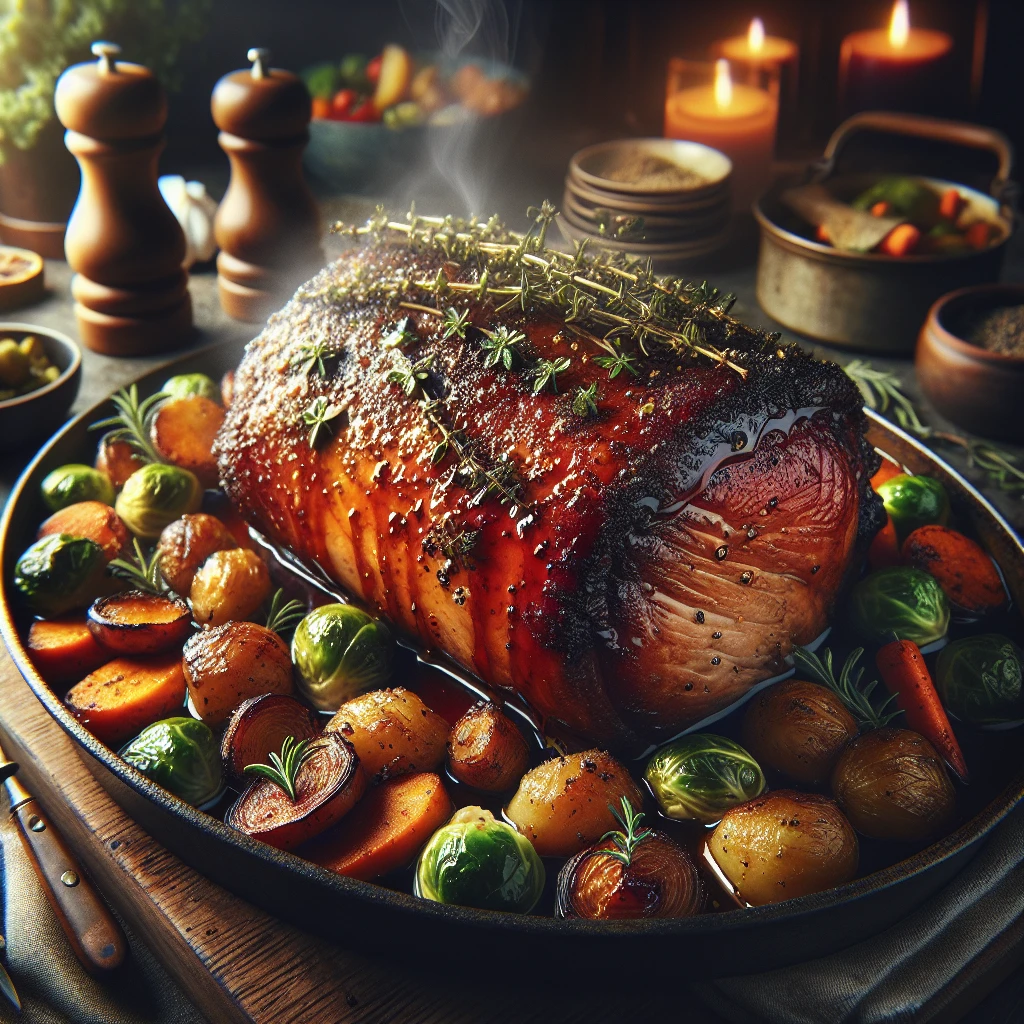
Maple Herb Pork Roast is a delightful twist on your usual roast with its sweet, aromatic glaze. This dish brings together the warmth of maple syrup and the freshness of herbs, perfect for cozy gatherings or Sunday dinners.
Pork shoulder is the star here, known for its rich flavor and tenderness when slow-cooked. The maple syrup adds a natural sweetness that enhances the pork's savory notes. A splash of olive oil helps the glaze adhere and adds a touch of richness. Fresh rosemary, thyme, and sage bring an earthy aroma that complements the sweetness. Dijon mustard introduces a subtle tang, balancing the flavors. Seasoning with salt and black pepper is essential to bring out the pork's natural taste. Finally, garlic adds depth and a bit of zing to the mix.
Pair this roast with creamy mashed potatoes and roasted seasonal vegetables for a complete meal. A side of crusty bread is perfect for soaking up the delicious pan juices. For a lighter option, serve with a fresh green salad tossed in a simple vinaigrette.
Your first step is getting your oven preheated to 325°F (165°C). You want it nice and warm, ready to transform that pork shoulder into something mesmerizing. While that heats up, grab a small bowl. Mix together the maple syrup, olive oil, rosemary, thyme, sage, Dijon mustard, salt, pepper, and minced garlic. It should come together into a fragrant, slightly thick glaze.
Place the pork shoulder in a roasting pan—something roomy enough so it doesn’t feel cramped. Pour your maple herb mixture over the pork, using a spoon or brush to ensure even coverage. Every inch should be glossy with that wonderful glaze. Cover the pan with aluminum foil; this keeps the moisture in and lets the flavors meld beautifully during roasting.
Pop the pan in your preheated oven and let it roast away for 2 hours. This slow cook is where the magic happens, breaking down the pork until it's tender. After 2 hours, remove the foil and crank up the heat to 375°F (190°C). This is your chance to get that caramelized crust. Roast for another hour, basting occasionally with the pan juices to keep it moist and enhance the glaze.
Once out of the oven, let the roast rest for about 15 minutes. This resting period is crucial — it allows the juices to redistribute, making sure every slice is juicy and flavorful. Then, it’s ready to slice up and serve.